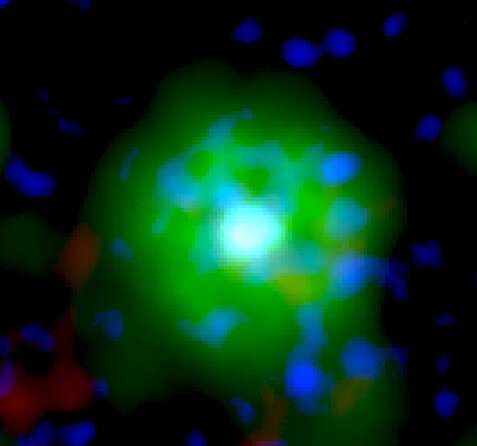Image: Cosmic neon lights

This image shows a new type of star that has never been seen before in X-ray light. This strange star formed after two white dwarfs—remnants of stars like our sun—collided and merged. But instead of destroying each other in the event, the white dwarfs formed a new object that shines bright in X-ray light.
A team of astronomers led by Lidia Oskinova of the University of Potsdam, Germany, used ESA's XMM-Newton X-ray telescope to study the object that was originally discovered in 2019. Back then, astronomers already reported that the object has very high wind speeds and is too bright, and therefore too massive, to be an ordinary white dwarf. They suggested that the object is a new type of star that survived the merger of two white dwarfs.
Based on new information from XMM-Newton, Lidia and her team now suggest that what we see in the image is a new type of X-ray source powered by the merger of two white dwarfs. The remnant of the clash—the nebula—is also visible in this image, and is mostly made out of the element neon (shown in green). The star is very unstable and will likely collapse into a neutron star within 10,000 years.
Provided by European Space Agency





















